

根据《中国新闻奖评选办法》有关规定,中国日报社总编室推荐作品《想听到身在湖北的你,每天平安的消息丨晚安短信湖北计划》《Shaxian delicacies taste global success(沙县小吃:国民美食的世界“味道”)》等参加第三十一届中国新闻奖试点报送单位初评。
公示期为2021年4月26日起,共5个工作日,如有异议,可通过电话、电子邮箱等方式向我社反映。
电话:64995655
邮箱:award@chinadaily.com.cn
中国日报社总编室
2021年4月26日
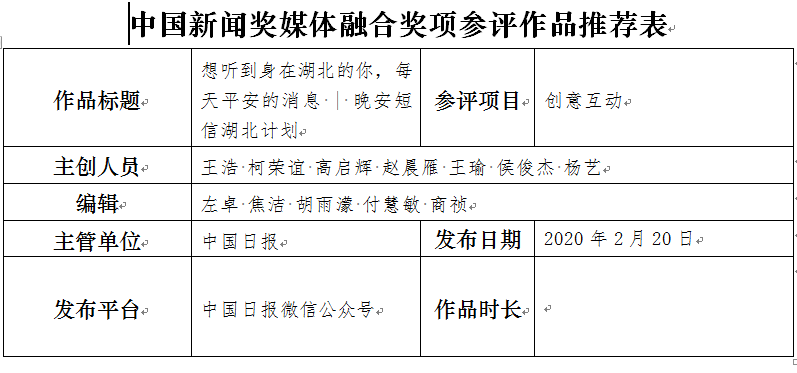


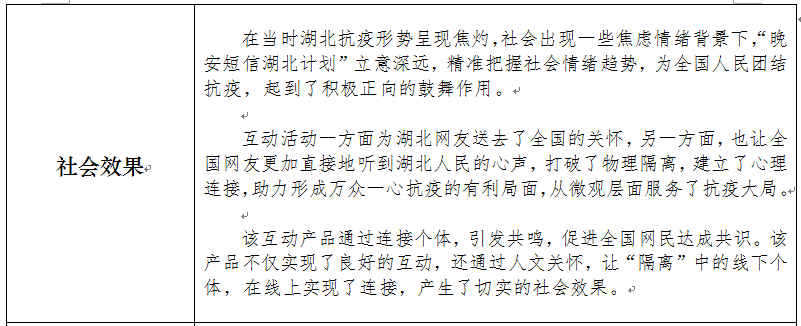
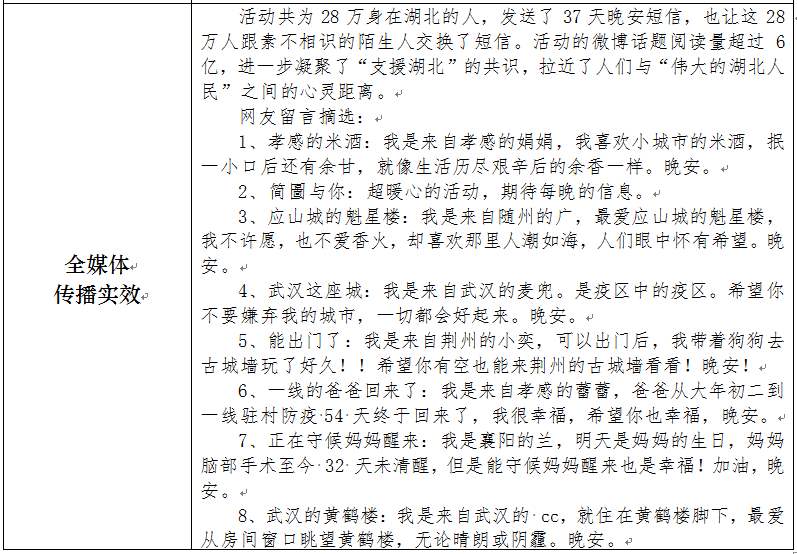
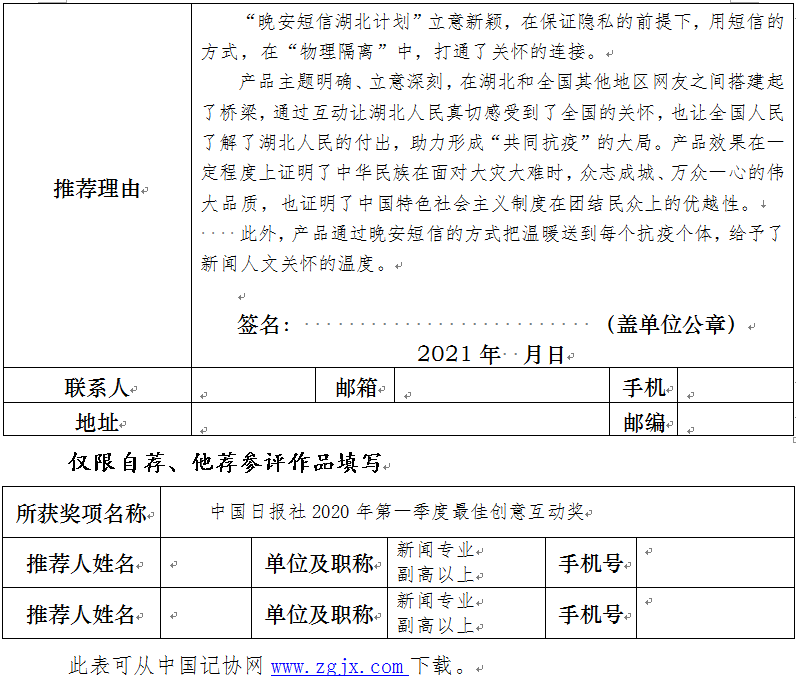

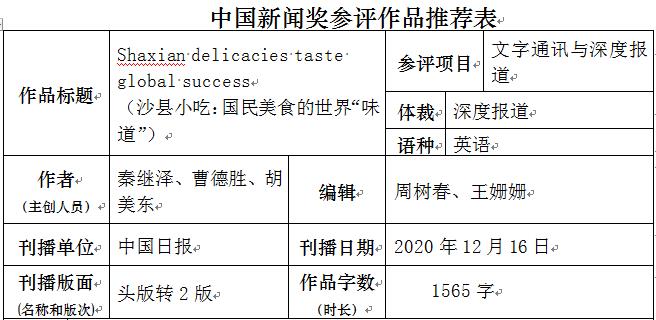
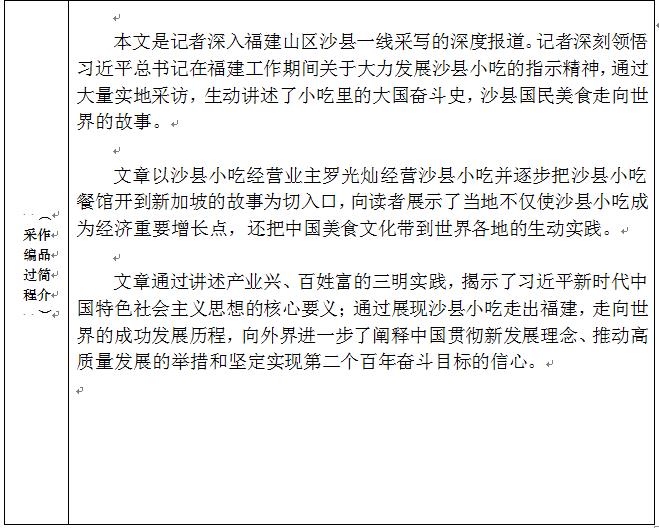
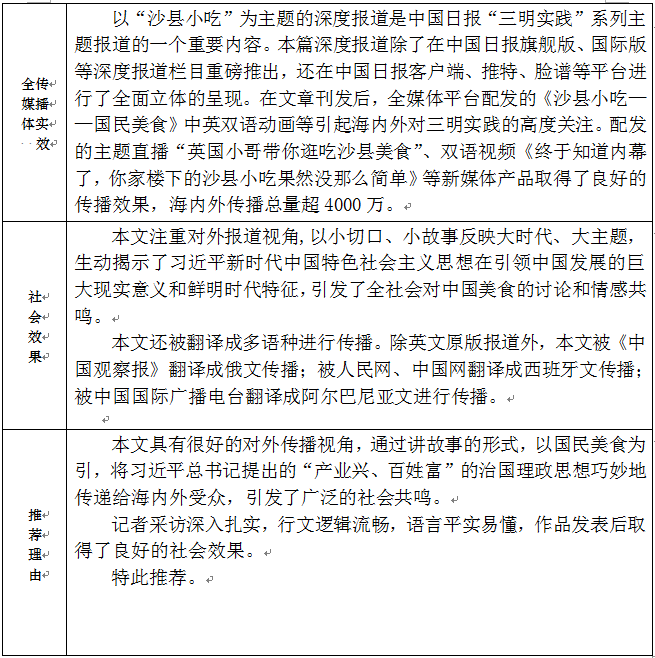
原文:
Shaxian delicacies taste global success
By QIN JIZE,CAO DESHENG and HU MEIDONG in Sanming, Fujian
Choice delights savored in scores of countries
More than 200 types of delicacies from Fujian province are making mouths water not only in China but across the world.
Two of the most popular delights from Shaxian county, Sanming city, are noodles boiled in bone soup served with peanut butter, along with wontons filled with juicy meat in a sizzling soup.
Twenty years ago, Luo Guangcan, 59, from Xiamao township in the county, worked in a local shoe factory to make a living.
Now, he earns considerably more by operating five restaurants serving Shaxian delicacies in cities such as Beijing and Tianjin, as well as Tangshan and Baoding in Hebei province. He has developed these eateries since 2007, and four years ago, opened his first overseas restaurant in Singapore.
In recent years, the annual profit from his businesses has reached more than 1 million yuan ($153,000), Luo said.
"I'm planning to expand my business in Singapore, and I'm also considering opening a restaurant in Malaysia, where there are many overseas Chinese," he added.
More than 60,000 people-mostly farmers-from Shaxian county have run restaurants across China serving Shaxian food since the 1980s, when locals traveled far to set up family-run outlets.
As the number of college students, migrant workers and traders in urban areas rose in the early stages of reform and opening-up, the delicacies were welcomed for their flavors and affordable prices.
The restaurant owners, who rely on razor-thin profit margins, have gained a better standard of living by working long hours.
There are now more than 88,000 restaurants serving Shaxian delicacies nationwide, with a total turnover of over 50 billion yuan annually, according to the Shaxian Delicacies Trade Association.
Providing foodies with quality snacks at competitive prices, the Shaxian delicacies business has become a local pillar industry.
Luo said he first thought about running a restaurant in early 2000, when he saw more people earning good money from such businesses, but he initially lacked the confidence to become involved.
He said that on Aug 8, 2000, President Xi Jinping, who at the time was deputy secretary of the Communist Party of China Fujian Provincial Committee and governor of the province, paid an inspection visit to Shaxian county.
"He happened to visit my home, chatted to me about my work and encouraged me to develop a Shaxian delicacies business to earn a better income," Luo said.
"He said Shaxian delicacies could be the county's pillar industry, they had a bright future and should be developed well," Luo said.
In 2007, Luo spent 500,000 yuan on setting up his first restaurant serving the delicacies in Beijing, which changed the course of his life. Now, after years of developing his businesses, he has tasted success.
"Shaxian delicacies have made a lot of people in my hometown rich, and more important, they have served as 'food ambassadors', as they have become increasingly known among foreigners," Luo said.
Brand expansion
Since mid-2018, Shaxian Snacks restaurants, with their iconic Pac-Man-like logos, have been established in 62 countries and regions, including the United States, Japan, Australia, France and Portugal.
This growth comes amid rapid overseas expansion by a number of Chinese fast-food chains that have enjoyed domestic success and have started to venture abroad in recent years.
Luo said the rapid development of businesses serving Shaxian delicacies in recent decades is inseparable from strong local government support.
Yang Xingzhong, secretary of the CPC Shaxian County Committee, said that since the late 1990s, the local government has tried to create more jobs for rural workers by developing the catering industry to raise farmers' incomes.
From 1985 to 2002, when President Xi worked in Fujian in various positions, he made several inspection visits to Shaxian county.
Yang said, "He asked officials to identify industries-Shaxian delicacies in particular-to sustain local economic growth and strengthen the service sector, making it a growth driver."
To provide customers with authentic food, the Shaxian Delicacies Trade Association, founded in 1997 and backed by the local government, registered the "Shaxian Snacks" trademark in 2014.
With unified management, the association is aiming for eateries serving the delicacies to be franchised in order to make Shaxian Snacks an international brand like KFC and McDonald's. It has also filed trademark applications overseas.
The menus of fast-food chains such as KFC and McDonald's are mainly standard in different countries, but this is not the case for Shaxian delicacies.
They differ according to the country and region they are served in, and prices also vary.
Typical Shaxian delicacies comprise seven types of foodnoodles, wonton, other dumplings, stew with soup, braised food, fried rice and combo meals. Each type may include 10 to 20 different dishes, meaning that a single restaurant can serve more than 100 different products.
According to locals, the basis for Shaxian delicacies is to make the best use of the cooking methods and ingredients.
For example, take bianrou, which translates as "flat meat". Compared with wonton in other areas, the bianrou for Shaxian delicacies has a thinner dough and the meat filling is made from lean pork taken from the hind legs of a pig to provide a chewy taste.
Wonton fillings in other areas are usually made from meat chopped repeatedly, but those for bianrou are made from meat paste, which is beaten with a stick. According to local legend, to make 500 grams of the paste using such a method, it must be beaten more than 1,000 times.
To ensure authentic flavors, the local government set up a training center in Shaxian county, offering courses to domestic and overseas Chinese wanting to start their own businesses. Teachers and students experiment at the center by using cooking methods, including frying and roasting, to cater to local tastes.
A central kitchen has also been built to distribute semifinished products to franchises nationwide.
Yang, the county committee secretary, said that developing the catering industry proved to be the right path to take to drive growth in the county. He added that local farmers' per capita disposable income rose from 2,805 yuan in 1997 to 20,528 yuan last year, and all those living in rural areas locally have been lifted out of poverty.
To illustrate the positive effect the delicacies have had on boosting growth in the area, locals say that bianrou and banmian (peanut butter noodles) support the high-rise buildings in Shaxian county.
Shao Binfang, a Chinese American born in Fuzhou, capital of Fujian, who owns a franchise in New York, said the success of Shaxian delicacies abroad is due to the fact that Fujian, which lies on China's east coast, is the ancestral home of many overseas Chinese, and the taste reminds them of home.
Shao said that during her childhood, food stalls could be seen everywhere in her hometown, and the delicacies are among the many dishes from China she still reminisces about after settling in the United States.
Challenges emerge
However, despite the success story, challenges have emerged in recent years.
In the 1980s and 1990s, Shaxian Snacks eateries were often run by family members, who spent a lot of time and energy preparing the food and serving it. The heavy workload meant that the quality of service was inconsistent.
Zhang Xin, deputy director of the Shaxian Delicacies Industry Development Center, said the traditional husband-and-wife food stall no longer meets customers' needs amid market competition and rising labor costs. "Problems, including poor sanitary conditions and brand management, are putting the brakes on the industry's development," Zhang added.
Fewer than 2,000 restaurants nationwide are authorized to use the Shaxian Snacks brand with the red Pac-Man-like logo, Zhang said, and the local government wants to improve the brand by setting up supply chains to distribute semi-finished products to franchises.
"A unified supply chain system is best for the franchises. To build a brand, it is important to set standards from the very beginning," he said.
The advantages of standardized management for food chains are obvious, as this helps reduce operating costs by providing unified supply chains, frees owners from heavy workloads and brings them more revenue, according to Zhang.
"Our goal is to turn the owners of small businesses into managers, making it much easier for them to earn money," Zhang said. He added that while promoting franchised stores, the center will also upgrade supply chains through apps.
With the help of modern commercial operations, the center wants to inject fresh energy into businesses producing the traditional delicacies. More overseas Chinese have shown an interest in this and representatives from businesses in France and Malaysia have visited China for training, Zhang said.
"We will try our best to make Shaxian delicacies an iconic Chinese brand with a worldwide influence," he added.
Li Xianjin, who runs the first Shaxian Snacks franchised restaurant in Sanming city, has witnessed the development of the local delicacies.
He said he is very happy with the standardized management for his business. "A unified brand and improved decor has brought me more customers. It's necessary for the brand to establish certain standards. Only by doing this can it become more attractive," Li said.
Yang, the county Party chief, said the local government wants to continue upgrading the production of Shaxian delicacies to build an industry that helps promote high-quality development in the county.
"We are confident of turning small businesses into a big industry, and that more and more people will benefit from the industrial chains," he said.
译文:
沙县小吃:国民美食的世界“味道”
风靡全国的沙县小吃是中国老百姓舌尖上的美味,且不说其种类多达200余种,单单是鲜嫩多汁的扁肉和色香味俱全的花生酱拌面就让人垂涎欲滴。如今,这个来自福建沙县的国民美食走出了国门,以其独特的魅力冲击着不同国家食客的味蕾。
在众多向世界不同国家传播这一中国美食文化的人当中,59岁的罗光灿是比较成功的一位。2007年以来,这位来自沙县夏茂镇的农民一直经营沙县小吃。过去十几年里,他在北京、天津和河北的唐山、保定等地开了5家沙县小吃店。4年前,他还把家乡的美食带到了新加坡,开起了他在境外的第一个沙县小吃餐馆。罗光灿告诉记者,近几年来,他经营沙县小吃的年利润每年都超过100万元。“我现在正计划扩大我在新加坡的沙县小吃的业务,也考虑在马来西亚开一个沙县小吃店,那里华人很多,比较容易打开局面。”
从上世纪八十年代开始,福建沙县的很多农民为了改善生活纷纷远走他乡,以家庭经营为主,在全国很多城市开起了小吃店。在中国改革开放的早期阶段,随着越来越多的大学生、农民工和小商业者涌向城市,沙县小吃凭着味美价廉赢得人们的青睐,而沙县小吃的经营业主也靠着辛勤劳动和薄利多销的经营方式逐渐赢得了口碑和效益。
据沙县小吃同业公会统计,目前有6万多沙县人在全国各地经营这一福建地方美食,全国沙县小吃门店超8.8万家,年营业额超500亿元。凭着向食客提供质优价廉的美食,沙县小吃已经成为当地的一个支柱产业。
说起经营沙县小吃的经历,罗光灿颇有感触。他告诉记者,20 年前,他靠着在当地一家鞋厂做工挣来的有限的工薪养家度日;当看到很多老乡开小吃店挣了钱,自己也动了心思,但也有一些顾虑。
2000年8月8日对罗光灿来说是一个难忘的日子,时任福建省委副书记、省长习近平在沙县夏茂镇调研时来到他的家中,和他拉起了家常。“他问起我的工作,当听我说到有开沙县小吃店的想法时,他鼓励我去闯去干,去挣更多的钱。当时他就说,沙县小吃能成为我们县的支柱产业,前景广阔,应当把它发展好。”
2007年,罗光灿投资50万元在北京开起了他的第一家沙县小吃店,这也改变了他的人生发展轨迹。经过几年的发展,罗光灿的沙县小吃店开得风生水起,他品尝到了经营家乡小吃给他带来的成功的滋味。“沙县小吃让我和我的乡亲们变得富裕了;更重要的是,当越来越多的外国人开始了解和品尝沙县小吃时,这些美味也成为传播中国餐饮文化的大使。”
目前,沙县小吃已经遍及世界62个国家和地区,包括美国、日本、澳大利亚、法国、葡萄牙等。近年来,沙县小吃在中国境外的发展也伴随着其它中国餐饮连锁品牌在国外的扩张。罗光灿认为,沙县小吃在过去10多年的快速发展离不开当地政府的强力支持。
沙县县委书记杨兴忠告诉记者,上世纪90年代以来,当地政府一直竭力促进农村地区人口就业,想方设法通过发展服务业来增加农民收入。杨兴忠说,习近平总书记在闵工作期间(1985-2002),对沙县进行过多次考察调研,要求加强以沙县小吃业为支柱的第三产业,使之成为新的经济增长点。
为了保证顾客吃到地道的沙县小吃,在当地政府的支持下,沙县小吃同业公会于1997年成立,并于2014年注册了“沙县小吃”商标, 旨在通过统一管理,使得沙县小吃像国际快餐连锁品牌肯德基、麦当劳一样,开拓出一条连锁经营的路子。该同业公会还在境外一些国家和地区注册了商标。肯德基、麦当劳在不同国家提供的食品主要是标准化管理的,而沙县小吃则不然,会根据地域的不同而有差异,价格也有差别。
典型的沙县小吃主要包括拌面、扁食、蒸饺、春卷、瓦罐汤、炒米等,每个品种都因为食料和做工不同又可以细分为10到20种菜品,这意味着每个小吃店可提供100多种菜品。据沙县本地人讲,沙县小吃味美主要在于其烹饪方法和食料的使用。以扁肉为例,它与其它地方的馄饨类似,但皮更薄,肉馅采用的是猪的后腿肉使得口感更有嚼劲;普通的馄饨肉馅通常是剁碎或搅拌的,而扁食的肉馅则是用棍捶打而成,显得更加细腻,一般一斤重的馅要捶打至少1000次。
为了保证沙县小吃的口味纯正,沙县政府在当地建起了培训中心,向国内外想要经营沙县小吃的人们提供培训服务。培训老师会向学生讲授烹饪沙县小吃的技术,并根据所在的地域的饮食特点进行有针对性的技术培训。当地还建起中央厨房,向国内连锁店提供半成品供应服务。杨兴忠告诉记者,实践证明,发展餐饮业是促进当地发展的一条非常正确的路子,沙县农村人口人均可支配收入从1997年的2805元上升到2019年的20528元,所有农村人口都已经全部脱贫。说起沙县小吃给当地发展带来的效应,当地人经常会说,“扁肉和拌面盖起沙县的高楼大厦”。
邵彬芳是出生在福建省会城市福州的美国华裔,她在纽约经营着一家沙县小吃店。她认为,沙县小吃在国外经营成功的原因在于,福建位于东南沿海,是很多海外华人的老家,沙县小吃很容易让他们想起家的味道。她说,在她孩提时代,她家乡的街道上随处都可以看到小吃店,沙县小吃是她定居美国后仍然在她记忆深处难以忘怀的美食。
然而,在沙县小吃快速发展的同时,挑战也随之而来。上世纪八、九十年代,沙县小吃的经营者们多以家庭为单位,主要以夫妻档为主,他们要花费很长的时间准备食材、烹制食物,繁重的劳动意味着菜品的质量和口味不能得到保证。
沙县小吃产业发展中心副主任张鑫告诉记者,近年来在市场竞争激烈和劳动成本不断提高的情况下,传统的夫妻档小吃店已经不能满足顾客需要,诸如食品卫生、餐饮环境、品牌管理等问题成为沙县小吃行业发展的掣肘因素。他说,全国有不到2000家门店已经获得授权使用沙县小吃的红色logo,沙县政府正致力于通过改善供应链管理、向连锁加盟店提供半成品服务等措施来提升沙县小吃的品牌形象。“统一的供应链体系有利于连锁加盟经营,从源头上制订标准对于品牌塑造至关重要。标准化管理的优势是显而易见的,有助于降低运营成本,把经营业主从繁重的体力劳动重解放出来,还能获得更多的收入。我们的目标是把小吃业主转变为连锁店的管理者,让他们挣钱更容易。”
张鑫补充说,在推广加盟连锁经营的同时,沙县小吃产业发展中心还通过开发手机app来提升供应链管理,用现代商业经营管理手段为传统小吃业发展注入活力。据张鑫介绍,越来越多的海外华人对经营沙县小吃产生兴趣,法国、马来西亚等国的华人代表还专程回国参加培训。“我们要竭尽全力,让沙县小吃成为具有世界影响的中国餐饮品牌。”
几年前,福建三明市民李贤锦经营该市第一家沙县小吃连锁店,他见证了这个地方小吃的发展历程。他说,他很喜欢沙县小吃标准化管理的经营模式。“统一的品牌管理和店面装修风格给我带来更多的顾客,给品牌设定一些标准是非常必要,只有这样,才能使这一品牌更具价值,才能吸引更多顾客。”
对杨兴忠来说,作为沙县的县委书记,他更希望通过提升沙县小吃的品质来使其成为促进当地高质量发展的支柱产业。“我们有信心把小吃业做成大文章,让更多的人从这一产业发展中受益。”